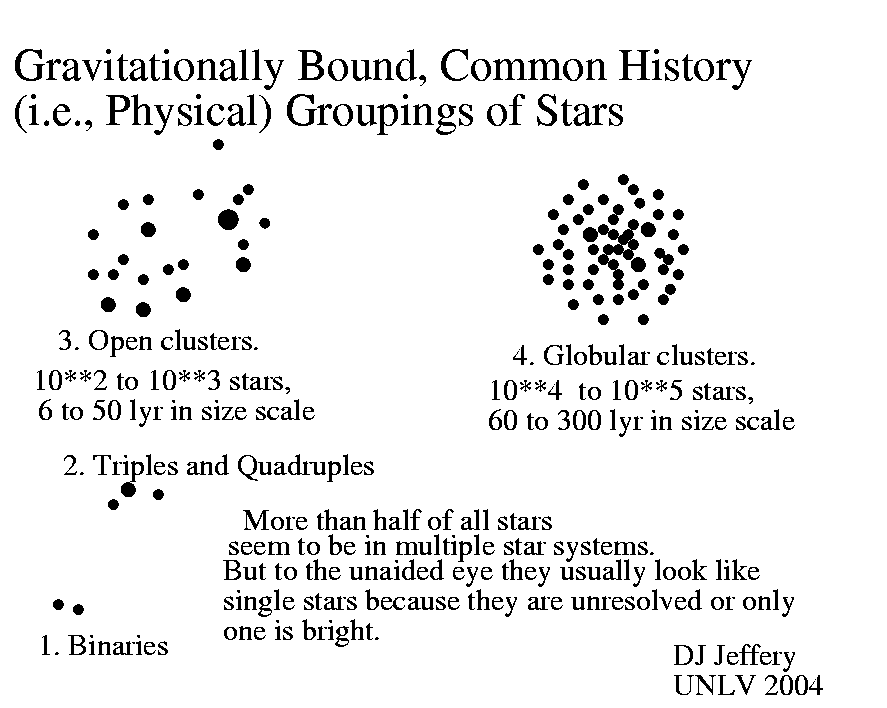
Caption: A cartoon illustrating gravitationally bound systems of stars: binaries, multiple-star systems, open clusters, and globular clusters.
Note stellar associations are unbound systems of stars that formed in the same star formation region and still have a common motion, but will gradually disperse over 10s of millions of years. The most noted kind of stellar associations are OB associations which contain of order 10--100 OB stars.
Features:
- The stars in each of the
groupings shown in the image all formed at the same time
in the same star forming region
and have the same metallicity,
EXCEPT that
open clusters and
globular clusters
may have a few stars
that formed in later bursts of
star formation.
Thus, the only major parameter differentiating the stars is stellar mass, except for those relatively few stars that formed after the initial formation in the cases of open clusters and globular clusters.
Thus, the systems are all natural controlled experiments (natural "clinical trials") for studying star formation and stellar evolution with only one parameter varied (i.e., stellar mass and NOT counting the relatively few later formed stars) to see the parameter's effect on the aforesaid processes.
- Binaries are particularly
usual since the
stellar masses
of the binary companions
are constrained by observations and the
binary mass function.
Thus, binaries with contrained stellar masses can compared to models of stellar structure with the same stellar masses in order to test the accuracy of the models.
Image link: Itself.
Local file: local link: binary_cluster.html.
File: Cluster file: binary_cluster.html.